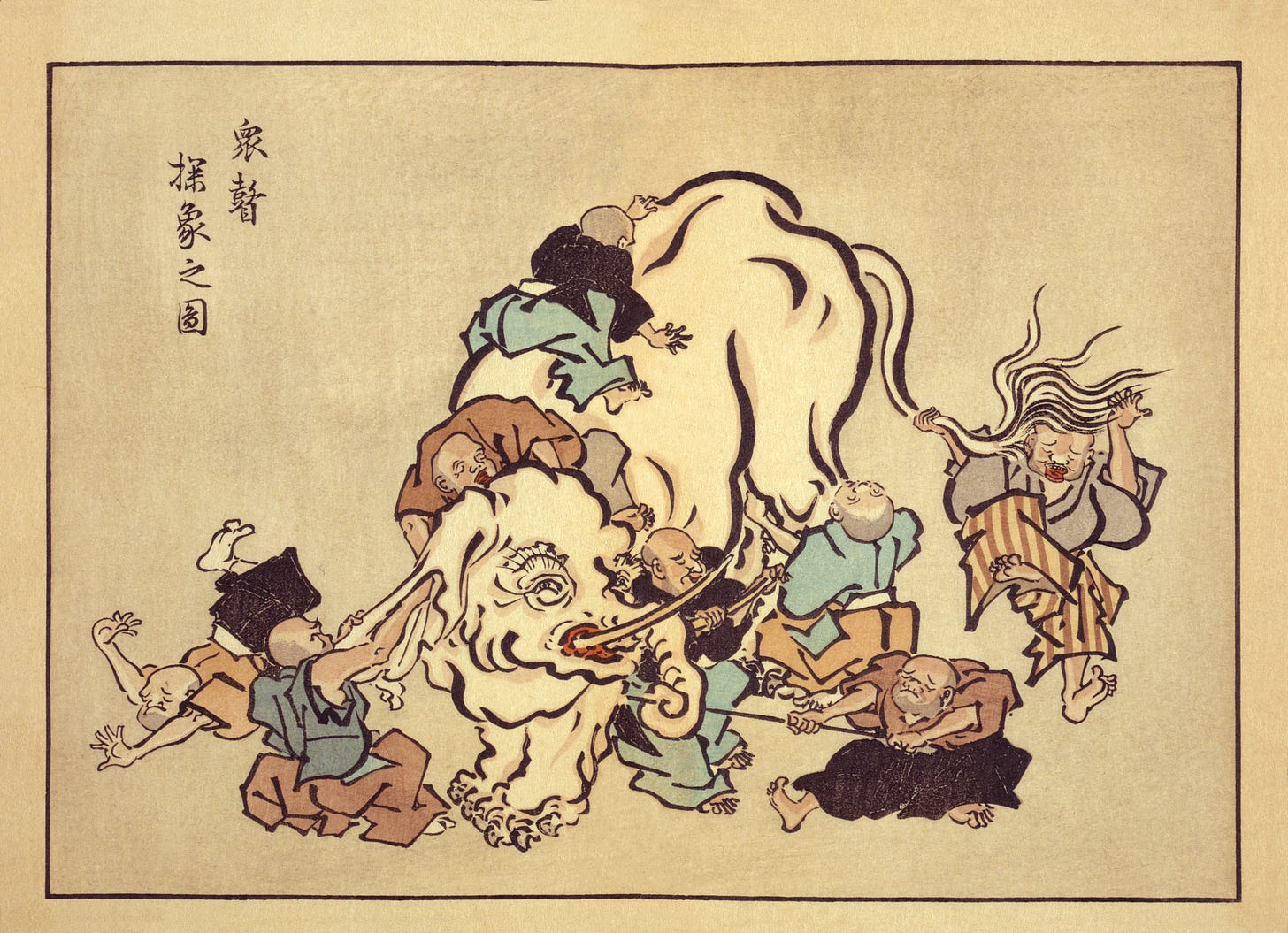Greenup Newsletter 12: Wicked India
Learning the Future
First of all, greetings to everyone who signed up for the ‘Wicked India’ masterclass.

Note that this newsletter offers a way of liking, commenting and sharing (see screenshot below)

Comments (or equally good - replies via email) are particularly welcome since they give us valuable feedback.
Climate change will upend the world, and India more than most. Much of India might become uninhabitable if business continues as usual, but that doesn’t mean we should descend into despair. If anything, we should respond to the warning bells with creativity and compassion. As the American historian Howard Zinn said:
To be hopeful in bad times is not just foolishly romantic. It is based on the fact that human history is a history not only of cruelty, but also of compassion, sacrifice, courage, kindness. What we choose to emphasize in this complex history will determine our lives.
It’s with that emphasis on courage and kindness that we pose ourselves an interesting challenge for the next eight weeks:
Is it possible to learn a flourishing future (for India)?
Learning the past seems relatively easy - you have your facts, I have my alternate facts and if I kill you before you kill me, my facts win and I get to write the textbooks.
But what about the future? There are no facts over which we can fight….
We learn how to fix the past, how to make it certain, but that won’t do with the future, which comes with possibilities instead of certainties. The key mental organ for the future is the imagination, which, unfortunately, has been colonised by flying cars and dystopias. We have to learn alternative futures in our bones so that we can enact those alternatives. According to the writer William Gibson:
The future is already here — it's just not very evenly distributed.
Our Approach

All of us have caught glimpses of the future; the question is whether we can assemble those views into a coherent, collective vision. We believe so, and the ‘Wicked India’ course is premised on the elephant being made whole out of glimpses of its parts.
And who am I to tell you which possibilities are worth highlighting?
Instead, we are creating a space in which your possibilities are evoked and arrayed alongside other peoples’ possibilities and these ideas will collide and merge into imaginations we can’t predict in advance.

Even in the best of situations, teaching is perceived as knowledge transmission - I know something you don’t and it’s my job to turn your ignorance into understanding. Some classes create a space for discussion and dialogue but the goal is still to assimilate the students into an existing body of knowledge.
We are about to take a very different route; instead of transmitting knowledge, this course will evoke it - we assume you’re coming with dreams and skills. Our task is to create the conditions in which those dreams will find ways to combine and grow. The main outcome of the class will be an imagination of a flourishing India that can be shared with others and built upon collectively in the coming weeks and months.
The sessions will be structured to achieve that goal and will have presentations as well as breakout rooms and discussions. Equally importantly, I hope that the participants will continue engaging with each other in groups during the week and building upon each other’s talents and interests. What will come out of these activities remains to be seen, since the attendees are a diverse group but I expect it to stretch all of our minds.
Our Tour Guides
There are many pathways to the future; we just need a bit of help along the way. The following three books are going to play that role.

Speculative Everything: Design, Fiction, and Social Dreaming - Anthony Dunne, Fiona Raby. “How to use design as a tool to create not only things but ideas, to speculate about possible futures. Today designers often focus on making technology easy to use, sexy, and consumable. In Speculative Everything, Anthony Dunne and Fiona Raby propose a kind of design that is used as a tool to create not only things but ideas. For them, design is a means of speculating about how things could be—to imagine possible futures. This is not the usual sort of predicting or forecasting, spotting trends and extrapolating; these kinds of predictions have been proven wrong, again and again. Instead, Dunne and Raby pose “what if” questions that are intended to open debate and discussion about the kind of future people want (and do not want).”

The Imaginary Institution of India: Politics and Ideas, Sudipta Kaviraj. Nations are, famously, imagined communities. India is no exception. How was that nation imagined? What might a future imagination look like? Sudipta Kaviraj presents an incisive introduction to these themes. This course starts with the premise that future imaginations of India must include climate change in some manner, and that imagination of climate change must be a political imagination. Which brings us to the third guide - Climate Leviathan: A Political Theory of Our Planetary Future, Joel Wainwright, Geoff Mann.

There are many many other resources; I am hoping that this course will give us a reason to prepare a comprehensive repository. I will end this section with a project worth glancing through: Ecotopia2021

Until Then
I hope to see many of you on Tuesday (that’s tomorrow if you’re reading this newsletter in your inbox). If you haven’t registered yet and want to, here’s the link. A parting message from someone expecting a career breakthrough tomorrow:



